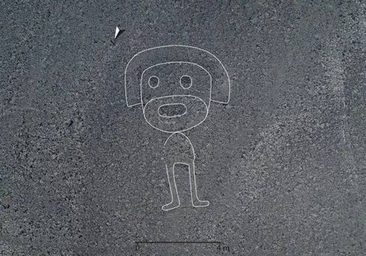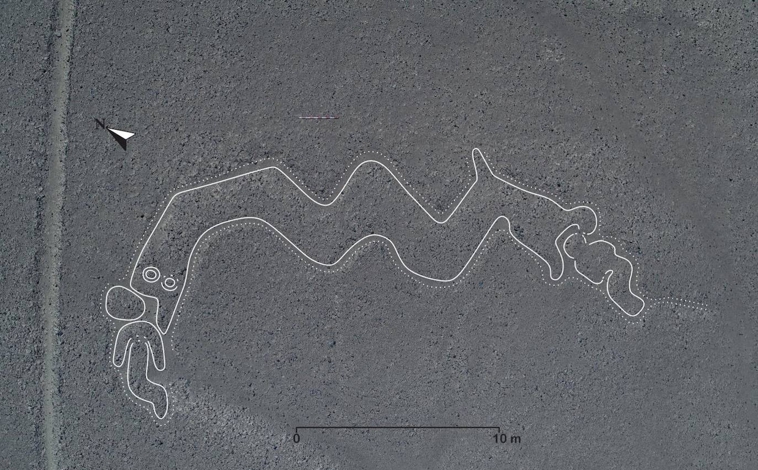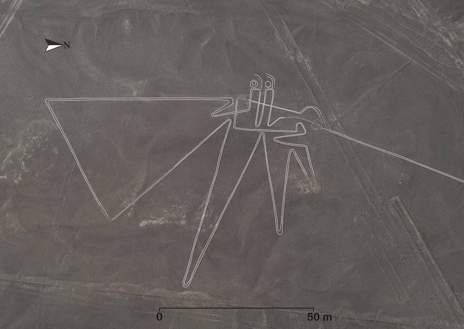Archaeologists from the Yamagata University Institute have discovered 168 new lines, representing humans, camelids, birds, orcas, felines and snakes, in and around the Pampa de Nazca in Peru. These biomorphic geoglyphs are believed to date from between 100 BC and 300 BC.

The research group, led by Professor Masato Sakai in collaboration with Peruvian archaeologist Jorge Olano, has published a statement stating that the huge geoglyphs were found using aerial photos and drones between June 2019 and February 2020.
With these 168, there are 358 geoglyphs found in the area since 2018. These mysterious lines were created by removing black stones to reveal a white sandy surface below. Current research suggests that there are two types: the linear type and the relief type. Of the geoglyphs discovered in this study, five are of the first type, while 163 are of the second. Most of those belonging to this last type are about 10 meters in diameter, and are distributed mainly along old paths.


Up to 36 of these lines were discovered in the Aja area, near the city of Nazca, where Yamagata University already discovered 41 between 2014 and 2015, which led to the creation of an archaeological park in 2017 in collaboration with the Ministry. of Peruvian Culture to protect them. With this discovery, it is now known that a total of 77 geoglyphs are concentrated in this archaeological park.

The origin of the Nazca Lines of Peru are one of the great mysteries that remain unresolved. The most diverse explanations and theories have been elaborated on them, including the fantasy that they were made by extraterrestrials.








